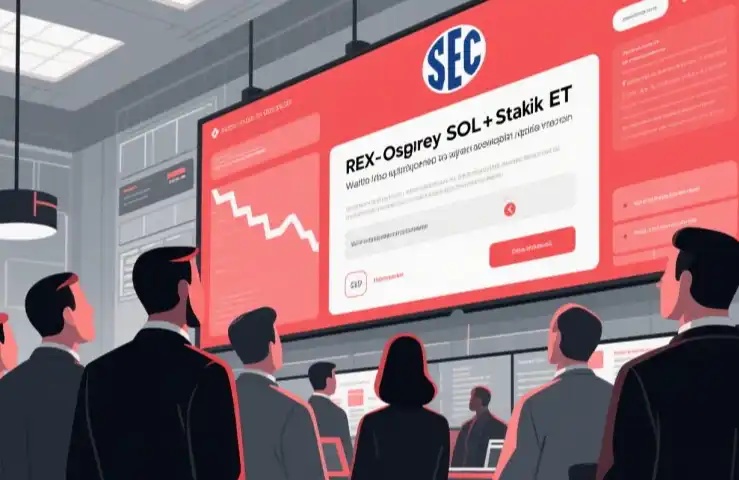"The Dog Days of 'Wait and See'": Can Altcoins See a Revival in July? | Trader's Insight
Since the official ceasefire between Iran and Israel, BTC has quickly rebounded, soaring from a low of $98,000 to $109,000, just a stone's throw away from its all-time high. Market sentiment has heated up, sparking renewed discussions about whether the "altcoin season" will come again, and disagreements among traders have intensified.
Supporters argue that historical experience cannot be ignored—whenever Bitcoin's market dominance has surged and then retraced, the altcoin season has quietly arrived. With BTC's market dominance now approaching 66%, a breakthrough past 70% and a turning point could trigger a full-blown altcoin eruption. Opponents, on the other hand, point out that the current market liquidity is still fragile, on-chain funds are conservative, and many altcoins lack fundamental support, leading to a proliferation of "shitcoins" and making a widespread bull run unlikely.
Despite differing views, traders have reached a consensus on one point: the altcoin season is unlikely to truly arrive in the short term. The current market trend is still dominated by Bitcoin, and the market structure leans toward a defensive stance. To truly usher in an altcoin season, one may have to wait a little longer.
Fundamental Analysis Camp
@ohyishi
A large number of US stock tickers in the pre-market are bridged to the crypto market, essentially siphoning off liquidity from the crypto market and channeling it to the stock market. Some altcoins that already had little value now seem even more like hot air.
@timotimo007
It feels like on-chain stocks are draining liquidity from the coin circle, drawing all the liquidity that wants to buy stocks through unconventional channels to the stock market, including money from the coin circle, other third-world money, illicit money... This is bearish for the vast majority of altcoins, and the already distant altcoin season is now even further away. Altcoins are inherently worthless, and listed ones are even worse. Other than shorting to make money, only fools would buy the dip, but fools won't remain fools forever.
Technical Analysis Camp
@biupa
Ethereum and some altcoins (such as SOL) are showing strength, with the possibility of testing $2,500 (ETH) or $150-$155 (SOL). Strong altcoins like $AAVE, $Fartcoin, $HYPE are worth watching as they may see structural moves.
However, until breaking the $110,000 (BTC) mark, we do not consider it entering the "major uptrend."
There is a market divergence: some are bearish (expecting a major drop), some are bullish (expecting the continuation of the major uptrend), making trading more challenging.
@joao_wedson
Over the past 60 days, this index has remained in the Bitcoin season range, meaning Bitcoin has outperformed most altcoins. But this isn't necessarily a bad thing—it may be a good opportunity to position oneself while altcoins are still lagging behind. However, history tells us that such cycles always repeat themselves—the market may be on the verge of a reaction. This is a time when shorting should be done with caution. Don't lose money on the short side before the rebound arrives.
The chart below shows that whenever this index rises by more than 20%, it tends to skyrocket in a short period, reaching up to 80%, as the "lagging" altcoins start surpassing Bitcoin.

@MikybullCrypto
BTC's dominance is at 65.77%, maintaining an upward trend, indicating that it is still the "Bitcoin season." Historically, once Bitcoin's dominance reaches above 70% and then sharply declines, a "comprehensive altcoin season explosion" occurs.

Data Analysis Faction
@Cato_CryptoM
Market data shows:
1. The market value has not changed significantly, but the altcoin share has increased slightly. From the weekend until now, altcoins have shown some optimism.
2. The trading volume continues to decrease. Compared to the record from last Thursday, the trading volume is still declining, indicating weak market liquidity.
3. On-chain retained funds have increased by 2 billion, with the current total at 2626 billion.
4. USDT: According to official website data, the market cap is $157.693 billion, an increase of $4.76 billion compared to last Thursday. Asian funds continue to flow in, while the trading volume has dropped significantly.
5. USDC: Based on official website data, USDC saw a net inflow of $300 million last week. The data on the website shows that the market cap has remained relatively stable. Funds from the American region have weakened in recent times, and the trading volume has decreased significantly. The trading willingness of American traders has greatly decreased.
Evaluation: Although there was a slight movement in the altcoin market, the overall data still does not appear too optimistic. With low liquidity, market volatility has increased. Fund activity has decreased, and the trading willingness of American traders has dropped. Under these circumstances, it is difficult to support the sustained activity of altcoins.
@CryptoPainter_X
The distribution status of this funding rate is quite interesting...
One side is that the market as a whole is not optimistic about BTC's future price action, while the other side is consistently optimistic about altcoins...
It is clear that the interest of on-chain funds is shifting, and is there still a glimmer of hope for the altcoin season?

@JamesWynnReal
Bitcoin Dominance (BTC.D) is likely to reach an all-time high. This is likely to significantly prolong the time before we truly enter the altcoin season.
When BTC.D declines and prepares to stabilize, the altcoin season will arrive. In my opinion, Bitcoin must reach at least $120,000 to $140,000 for this to happen.
Welcome to join the official BlockBeats community:
Telegram Subscription Group: https://t.me/theblockbeats
Telegram Discussion Group: https://t.me/BlockBeats_App
Official Twitter Account: https://twitter.com/BlockBeatsAsia
 Forum
Forum OPRR
OPRR Finance
Finance
 Specials
Specials
 On-chain Eco
On-chain Eco
 Entry
Entry
 Podcasts
Podcasts
 Activities
Activities









